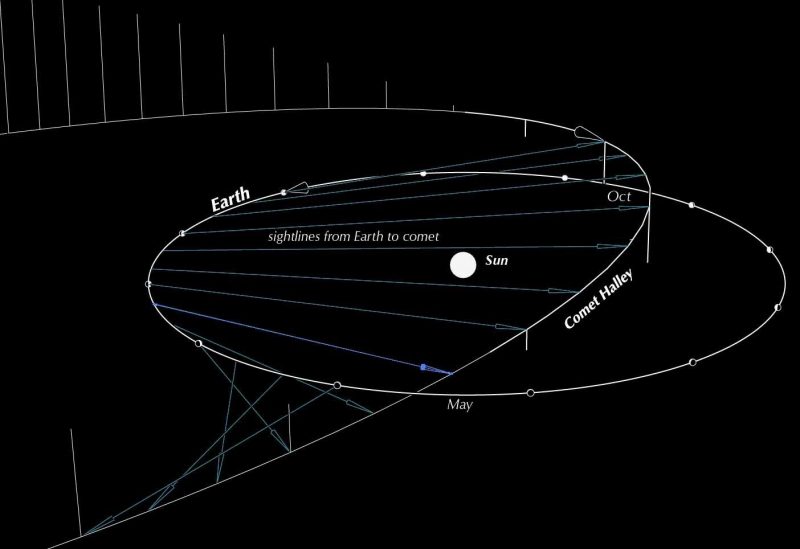
Originally printed at Guy Ottewell’s blog. Reprinted here with permission.
You may already have seen outlying meteors of the annual Orionid shower. They should reach a peak on the mornings of October 21 and 22, in the hours after midnight. Their zenithal hourly rate – the number that one alert person might count in an hour at the peak time, in perfect conditions and with the meteors coming from overhead – may be 25. You’ll be very lucky if you manage to count that many, especially as this year there is a last quarter moon in the sky at the same time.
The radiant of a meteor shower is the point or small area among the stars from which the meteors seem to fly. They are particles of dusk or rock shed long ago from a comet – in this case, periodic comet 1P Halley.
The particles emit light as they hit Earth’s atmosphere and burn up. Really, they are on parallel tracks, many miles apart, and can appear in any part of the sky. If you can trace one of these shining trails back to the Orion-Gemini constellations in our sky, it was an Orionid and not a sporadic meteor.
EarthSky 2020 lunar calendars are available! They make great gifts. Order now. Going fast!

In the picture above, Earth is seen from ecliptic north (the north pole of its orbit). The broad flat arrow shows its flight along its orbit in one minute, and the arrow on its equator shows its rotation in three hours. The actual stream of particles in space is millions of miles wide; the dotted line represents only those that happen to arrive from exactly overhead.
For Europe at this time, just before dawn, the Orionid radiant and the moon are almost overhead. America is moving around toward midnight and toward a nearer view of the hemisphere of sky in which the meteors can appear.
From all parts of Earth … the reason you may see more of these meteors after midnight, especially toward dawn, is that we are going to meet them: they are hitting Earth’s advancing front side, as shown in the illustration above. And that is because the orbit of their famous parent, Comet Halley, is retrograde – counter to the orbits of Earth and the other major planets.

You can see that the inward track is across the October part of Earth’s orbit. That’s why we see Orionid meteors in October. And the outward track is across our orbit in May. And so we shall see a second Halley-derived shower, the Eta Aquariids, in May. The orbit does not exactly intersect Earth’s. We see meteors because the particles shed by a comet gradually diverge from its orbit, filling a vast tube of space.
Bottom line: Charts and insights about this week’s Orionid meteor shower from astronomer Guy Ottewell.











